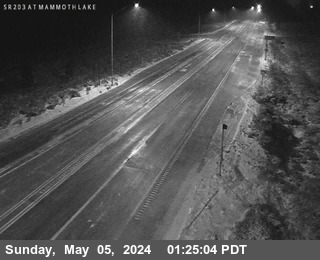Brought to you by Howard Sheckter
Modest Jet energy now moving through the High Country Aloft will spin up into an Upper Low over the weekend off the Baja Coast….As a Strong Upper High builds into CA Saturday and Sunday it will become quite mild in the High Country……Showers are expected Tuesday through Thursday….
Friday January 23, 2015
Saturday AM:
Latest Update 1-22-15 from DWP for the Mammoth Pass area is 18% of normal to date and 10% of normal for the April 1st average. According to DWP, we are very close to being dead even at this time with the drought year 1977. According to Bob Sollima, (Back Country Bob), there is only 4.00 up on the pass which is even less than the telemetry is indicating. So it is possible that we are drier at this time than that year. Bob, if you are reading this, please email me and let me know the source of your data or measurement.
I just looked at the reanalysis 500mb maps between 12/1/76 and 6/30/77. There are striking similarities in that time period, both to ENSO, the PDO and the “AO monthly mean”. The AO monthly mean was a -2 sigma vs this Dec/Jan -1 Sigma. What happened in the winter of 1977 was that the long dry winter began to break beginning the middle of February with decent storms the 4th week and good storms in March and April. I would say from the reanalysis 500mb charts that it was a cooler spring and unsettled, well through May.
The biggest change of course for Mammoth is that Mammoth Mountain installed snow making several years ago which has made all the difference one can say. Chatting with those that ski every day, they have told me that they continue to enjoy themselves as the mountain freshens up the snow on many runs on a regular basis.
In 1976 without snow making, we had a few early storms in the Fall, then virtually nothing for weeks. I understand that the mountain opened early that ski season then closed for a few months then re-opened again in either late February or March.
From Fridays discussion:
Sky’s over Mammoth were clear this morning and as a result….Low temperatures this morning chilled well down into the 20s. The current analyses at 500MB showed the flow at 300MB out of the NNE as a weak upper jet dives south associated with a shearing trough. Gusty winds over the crest in the 50MPH range will continue today through Saturday AM. The energy associated with the upper jet will move south off the coast of BAJA and spin up into a closed upper low at 500MB. Though the process, dynamic lift will occur which increases the PWAT within the system over the weekend. In the meantime, a strong upper high will build into Northern CA Saturday and pinch off a closed anti cyclone Sunday. Through the process, a rapid decrease in the ridge tops winds will occur Saturday. Additionally, a rapid warm up will occur from the mountains of the Sierra Nevada to Southern CA as the upper flow sets up a moderate Santa Ana condition Sunday over the LA Basin as adiabatic lapse rates rule their. It will be beautiful in LA with highs in many areas in the 80s on Sunday. It will be in the low 70s in Bishop and near 60 in Mammoth Sunday.
OUTLOOK:
The Upper Anti Cyclone will progress into the Great Basin/Nevada Monday and allow the system spinning up off the coast of BAJA to lift north into Southern CA Monday night and into the Central Sierra Tuesday. This is neither a strong storm, nor does it have a significant cold air source. There is a lack of strong dynamics to provide meaningful precipitation for the Central Sierra. At this time, it is dubious on the actual main moisture channels/trajectory. So in the meantime, showers are the best way to cover the outlook here in the Central Sierra Tuesday into Thursday. It is possible that we could pick up a few inches of snow over the upper elevations or even more if the main trajectory of moisture is more north somehow. Stay tuned, I’ll have another look and update Sunday.
Longer Range:
Above Normal temperatures and below normal precipitation are both indicated in both 6 to 10 and 8 to 14 day outlook’s. With that said, there will be some precipitation over the next two weeks. However, at this time, no storm cycle, (5 or 6 feet+) is in the short, medium or long-range. The Dweebs expect that this dry winter will break at some point beginning sometime in February and extend into March and April. This is based in part on the CPC’s weeks 3 and 4 outlook as well as statistically, the driest winters do.
Philosophically:
It is the opinion/belief of this WX Dweeb that this resilient upper ridge of the past 4 years over the far west CONUS, is a fundamental reaction to a teleconnection/s of unknown origin, that has yet to be discovered. Its resulting persistence and sigma in this short period climatic variation is proof of that. The fact that precipitation most often, if not always returns in the late Winter and Spring is part of the disruption of that phantom teleconnection.
Dr Howard and the Dweebs……………………………….:-)




